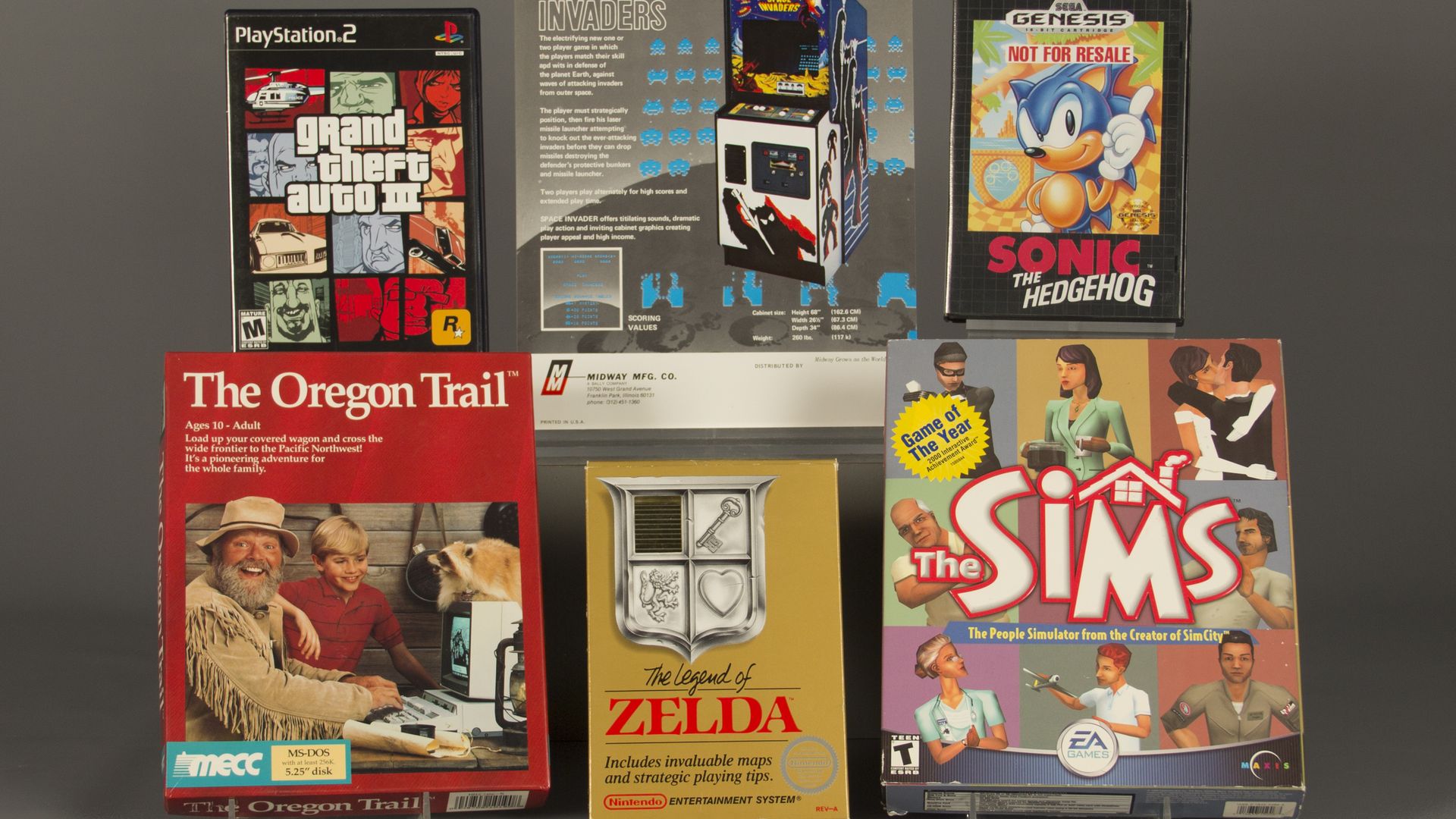
The Strong National Museum of Play established the World Video Game Hall of Fame last year to try to formally recognize the most important games – the most iconic, most influential games with the longest lives and further reach.
The first round of inductees to make the cut were Pong, Pac-Man, Super Mario Bros., Tetris, Doom, and World of Warcraft.
This year we have a new list of games, just as significant as the first round. Finalists that didn’t make the cut include Final Fantasy, Madden, Minecraft, and more. Here are those that did, though, along with the museum’s official statement on the reasoning behind the choice.
Grand Theft Auto III
Developed in Great Britain and released in 2001, Grand Theft Auto III was the first 3-D open-ended, “sandbox-style” game to achieve massive mainstream popularity and widespread critical acclaim. The third standalone title in the franchise sold 14.5 million copies by 2008, becoming the first breakout hit in a series that sold more than 220 million units as of 2015. “By providing players with a license to do virtually anything they wanted to do on foot or behind the wheel, Grand Theft Auto III renewed debates about the role of games and violence in society while it signaled video games aren’t just for kids,” says Jeremy Saucier, assistant director of The Strong’s International Center for the History of Electronic Games. “And the game’s unlimited play possibilities became a model for many other open-world games that followed.”
The Legend of Zelda
Inspired by creator Shigeru Miyamoto’s childhood expeditions through woods and caves, The Legend of Zelda (1986) popularized non-linear exploration games and paved the way for some of the industry’s most famous role-playing and action-adventure games. The United States release of The Legend of Zelda was also the first console game to include an internal battery for backing up saved data. It sold more than 6.5 million copies and became the fifth best-selling NES game of all time, behind only the first Super Mario Bros. games. Says The Strong’s Associate Curator Shannon Symonds, “The Legend of Zelda became one of the most iconic titles of the 1980s and a staple of popular culture with its sequels, spin-offs, comic books, and a television series.”
The Oregon Trail
Three student teachers created The Oregon Trail in 1971 to help Minnesota schoolchildren learn American history. First programmed on a primitive teletype printer, the game challenged students to assume the role of Western settlers crossing the continent on the way to the Pacific coast. In the 1970s and 1980s, when computing access was rare, The Oregon Trailnot only instructed players in American history but also introduced many of them to computers. More than 65 million copies of the game have been sold. “The Oregon Trail is perhaps the oldest continuously available video game ever made, but more importantly, it pioneered a blend of learning and play that showcases the valuable contribution games can make to education,” says Jon-Paul Dyson, director of The Strong’s International Center for the History of Electronic Games.
The Sims
Released in 2000, designer Will Wright’s virtual dollhouse game, The Sims, pushed the boundaries of what a video game could be by allowing players flexibility to tell stories in an open-ended environment. Wright described it more as a toy than a game, a digital dollhouse that served as the setting for endless domestic dramas. With nearly 200 million sales in 60 countries and more than 20 languages, The Sims is the best-selling PC game franchise ever. “The game has had universal appeal, with female players outnumbering males, and adults as passionate about the game as children,” says Dyson. “And by turning the computer into a toy to explore the complexity of the human experience, The Sims radically expanded the notion of what a game could be.”
Sonic the Hedgehog
To develop a rival to Nintendo’s character Mario, Sega hosted an in-house design contest that produced Sonic, a new hedgehog mascot with a brash, in-your-face attitude. After its launch in 1991, Sonic the Hedgehog’s lightning-fast game play gave Sega a popular title in the 1990s console wars. With more than 15 million copies sold, Sonic the Hedgehog remains the best-selling Sega Genesis game of all time; the entire Sonic franchise has 350 million sales or downloads. Says Symonds, “The game spawned more than 20 additional games and spin-offs, as well as a television show and comic book. Sonic was even introduced as the first video game-inspired balloon in Macy’s Thanksgiving Day parade, making Sega’s mascot recognizable to millions of people worldwide who may have never even played the game. ”
Space Invaders
Designed by Tomohiro Nishikado and released in Japan in 1978, the arcade game Space Invaders challenged players to zap an ongoing onslaught of aliens. The game included a “high score” at the top of the screen, and this popular feature soon became a standard element of arcade games. Space Invaders was also the first Japanese game to use a microprocessor. In 1980, Space Invaders entered the home console market and became the Atari 2600’s most popular game. “Although a handful of shooter games preceded Space Invaders, its runaway success, innovative features, compelling graphics, and elemental themes captured the public imagination, spurring many imitators and a craze for arcade games” says Saucier.



















